History of the Salzburg Salt Mine: The salty history of ancient oceans, Celtic princes & prince-archbishops
If you stand high atop the Dürrnberg outside Hallein, your gaze floats along the river to the city of Salzburg. Who doesn’t know this place? The city of Mozart! Where Wolfgang Amadeus was born and began to show the world his musical genius. The city of the Salzburg Festival, and of Salzburger Nockerl! A baroque city that is visited by guests from around the world due to its extraordinary beauty! Yet despite all of that, only a few are truly aware of where the origin of this astonishing magnificence lay. Namely right here, deep inside the Dürrnberg. For it was salt, “white gold”, that first made the Celtic princes of the Dürrnberg, and later the Salzburg prince-archbishops so rich and powerful, simultaneously bestowing greatness and splendor upon Salzburg. But let us start this long story at the very beginning …
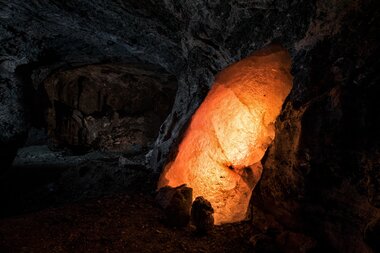
The salt deposits: born out of the primordial oceans more than 3.8 million years ago
It all began an incredible 3.8 billion years ago – the Earth’s crust had cooled and the salty primordial oceans had been created. Even “just” 200 to 250 million years ago, present-day Austria and Germany were still covered by a gigantic sea. Over time, the waters would evaporate – and sediment became deposited on the seafloor. Ultimately, the salt crystallized and sank to the bottom. Once the original ancient oceans had dried up completely, these layers were covered by dust and clay. Then, approximately 100 million years ago, the continents shifted, the Alps upfolded. This in turn created a convoluted mix of salt and rock strata, until the mountains finally took the shape we might recognize today. That said, the mountains are still in motion – with the same process continuing to this very day.
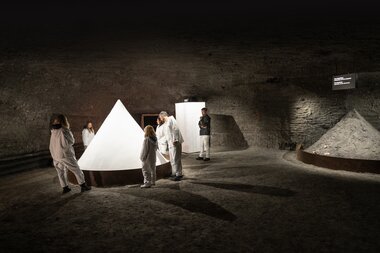
Fabulous treasures: The wealth of the Celts on the Dürrnberg
In the Neolithic Period around 4000 BCE, people made a game-changing discovery: Salt could be used to conserve meat! To do so, they exploited salt that came to the surface in the form of saltwater springs. They allowed the salty water to drizzle across hot rocks – leaving a residue of the white mineral. Due to a dramatic deterioration of the climate at the end of the Bronze Age, salt, as a preservative, became increasingly important – and the quantities collected from those saltwater springs no longer sufficed: They began to dig down to find this valuable natural resource. The 6th century BCE marked the beginning of prehistoric salt mining on the Dürrnberg. The Celts dug tunnels into the Dürrnberg as much as 280 meters deep and 4.5 kilometers long. Around 2600 years ago – during the so-called Iron Age – the Celts settled the Dürrnberg. The rich salt deposits below ground provided the basis for their existence, work and prosperity. This is attested to by elaborate utilitarian items, jewelry and weapons that were found here – such as the famous “beaked jug” of the Dürrnberg. Other objects unearthed here, made of gold, coral and amber, show that the Celts also engaged in trade with distant lands.
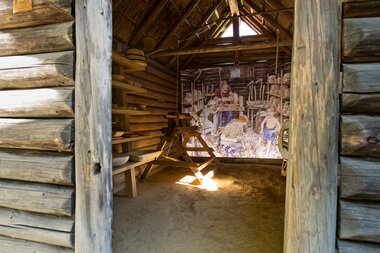
Tip:
If you take a stroll from hut to hut through the authentic replica of SALINA Celtic Village on the Celtic Mountain, you will feel like a real-life Celt. With the new AR Explorer App, you will be able to playfully immerse yourself in the world of the Ancient Celts. Complete the interactive treasure hunt and shoot a selfie of yourself next to a virtual version of the famous beaked jug from the Dürrnberg! The newly created info center at the Celtic Village provides fascinating insights into the history of settlement on the Dürrnberg and the exciting work done by archaeologists. Incidentally, the original artefacts from Celtic times -including the iconic beaked jug – are on exhibit at Museum of the Celts Hallein! Admission to the Celtic Mountain is free with your Salzwelten Ticket. The Salzwelten Ticket also gives you discounted admission to Museum of the Celts Hallein.
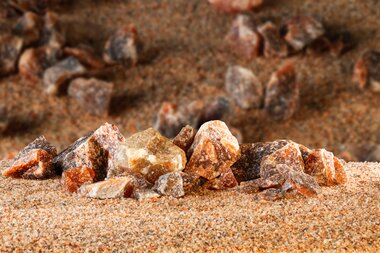
Pomp and Circumstance: the magnificent age of the Salzburg prince-archbishops
With the arrival of the Romans, salt production on the Dürrnberg came to a gradual standstill. Only in the 12th century – in the year 1191 to be precise – was it brought back to life. By no less than the prince-archbishops of Salzburg. They rediscovered “white gold” as an immense source of wealth. It was above all Prince-Archbishop Wolf-Dietrich von Raitenau who, living from 1559 and 1617, utilized the huge revenues from the salt trade to build numerous Baroque buildings in the nearby city of his official residence, Salzburg. To this day, people from around the world come to admire the magnificent buildings that we owe to salt.

For more than 450 years: the world’s oldest showcase salt mine
It was all the way back in the year 1607 that the first guests were admitted to the tunnels of the salt mine outside Hallein. Which makes it the very first salt mine in the world to open its doors to the public. Since then, around 5 million visitors have come here to explore this underground world. Active salt mining in the Dürrnberg ended in July 1989, concluding a proud history of 800 years of salt production. But since 2019, the long tradition of salt production on the Dürrnberg has been revived. In the Salt Manufactory on the Celtic Mountain, a very special gourmet salt is produced by hand: BAD ISCHLER Salzzart – pyramid-shaped flakes of salt, that make good dishes even better. Produced in small quantities of exceptional quality.
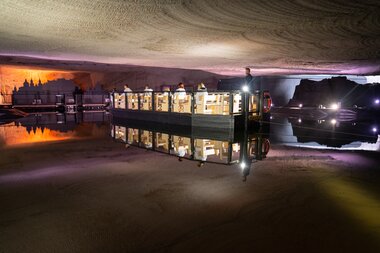
New at Salzwelten Salzburg: interactive time travel through the epochs
To this day, the paths which Celtic miners dug meter-by-meter into the mountain over 2500 years ago, the big tunnels excavated by the prince-archbishops and the modern mining facilities deep inside the mountain have lost none of their appeal. To the contrary: A completely redesigned visitors’ center at Salzwelten Salzburg now takes you on an adventure-filled journey through every epoch of salt production, highlighting the immense importance of this “Essence of Life”: from primordial oceans, to the prosperous Celts and ostentatious Salzburg prince-archbishops, to modern salt production of today. An exciting, interactive voyage through time, reawakening history with the help of cutting-edge technology at original locations below ground. And, incidentally, also great fun for the whole family…
So, have we sparked your interest in a journey back in time to the world of the Celts, prince-archbishops and ancient oceans? If so, now is the perfect opportunity to purchase your ticket for a visit to Salzwelten Salzburg and the Kelten.Erlebnis.Berg!
Online TicketMilestones of salt mining on the Dürrnberg
| 3.8 billion years ago | primordial oceans are created |
| 200 to 250 million years ago | present-day Austria and Germany are covered by gigantic salt seas |
| 200 million years ago |
water evaporates in cut-off ocean basins, sediments and salt are deposited |
| 100 million years ago | upfold of the Alps causes the various strata to intermingle, salt lodes are created |
| 4000 BCE | people use natural saltwater springs to produce salt |
| ca. 600 BCE |
Celts first mine salt on the Dürrnberg and settle in the area |
| 200 CE | less and less salt mining on the Dürrnberg |
| 1196 |
battle for “white gold”: Archbishop Adalbert von Salzburg has the town of Reichenhall, together with its saltworks, burned to the ground. |
| 1210 |
one of the first salt pans is operated in Mühlpach (Hallein) |
| 1295 |
soldiers of the Salzburg prince-archbishop devastate the salt pans in Gosau and set fire to salt works in Aussee |
| 1315-1450 |
expansion of salt mining on the Dürrnberg |
| 1530 |
Archbishop Mathias Lang completes a centuries-long process : Hallein has a salt monopoly! |
| 1542 | production reaches an annual volume of 22,000 tons |
| 1607 | first guests tour the mine |
| 1862-1971 | ongoing expansion of production in Hallein, peak production: 72,230 tons of salt annually |
| 1972 |
production of table salt is relinquished to Ebensee, salt-mining crisis at the Hallein saltworks |
| 31.07.1989 | brine and salt production in Hallein cease |
| 1994 | opening of the mine and underground tunnels as a tourist attraction |
| 2019 |
resumption of small-scale gourmet salt production at the Salt Manufactory on the Kelten.Erlebnis.Berg |
